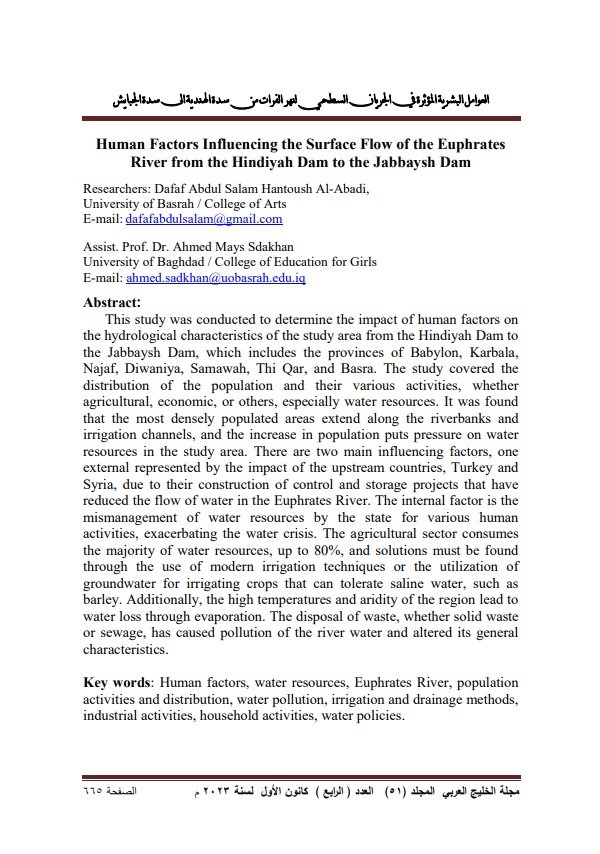Human Factors Influencing the Surface Flow of the Euphrates River from the Hindiyah Dam to the Jabbaysh Dam
Keywords:
Human factors, water resources, Euphrates River, population activities and distribution,, water pollution, irrigation and drainage methods, industrial activities, household activities, water policiesAbstract
This study was conducted to determine the impact of human factors on the hydrological characteristics of the study area from the Hindiyah Dam to the Jabbaysh Dam, which includes the provinces of Babylon, Karbala, Najaf, Diwaniya, Samawah, Thi Qar, and Basra. The study covered the distribution of the population and their various activities, whether agricultural, economic, or others, especially water resources. It was found that the most densely populated areas extend along the riverbanks and irrigation channels, and the increase in population puts pressure on water resources in the study area. There are two main influencing factors, one external represented by the impact of the upstream countries, Turkey and Syria, due to their construction of control and storage projects that have reduced the flow of water in the Euphrates River. The internal factor is the mismanagement of water resources by the state for various human activities, exacerbating the water crisis. The agricultural sector consumes the majority of water resources, up to 80%, and solutions must be found through the use of modern irrigation techniques or the utilization of groundwater for irrigating crops that can tolerate saline water, such as barley. Additionally, the high temperatures and aridity of the region lead to water loss through evaporation. The disposal of waste, whether solid waste or sewage, has caused pollution of the river water and altered its general characteristics.




